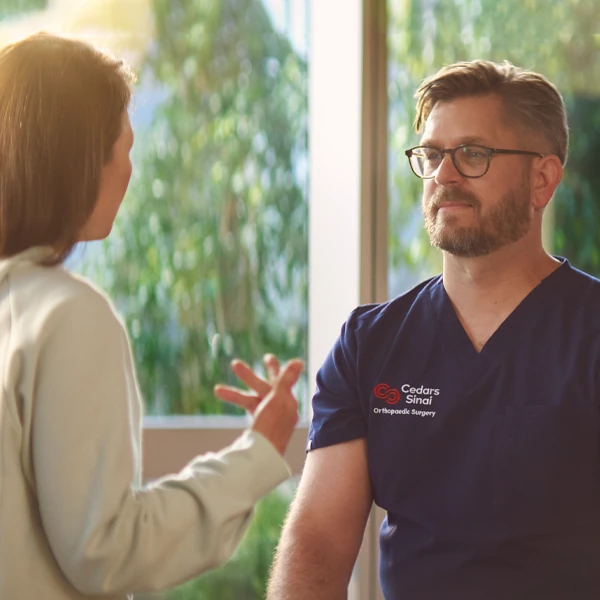Sponsored Content
from Cedars-Sinai Limb Reconstruction Program

In the aftermath of an amputation, you’re faced with rebuilding a limb and your life. New advances in limb reconstruction offer more options than ever for building strength, agility and range of motion.
“The Limb Reconstruction Program at Cedars-Sinai is a resource for patients who are looking for the next level of support and treatment,” said Geoffrey Marecek, MD, a Cedars-Sinai orthopedic trauma surgeon. “For every patient who is at risk of losing a limb or has lost one, there’s a path forward. We want to help them navigate that path to a life where they’re confident, comfortable and moving.”
At Cedars-Sinai’s Limb Reconstruction Program, our surgeons collaborate with specialists and partner with you to develop a plan tailored to your needs and lifestyle. Marecek suggests those who are contemplating limb reconstruction consider these important factors and options:
FIND THE RIGHT TEAM, NOT JUST THE RIGHT DOCTOR
A team of specialists that collaborate across many disciplines is crucial to long-term recovery. Limb reconstruction and pain management come with a web of complex decisions and options. A team of health professionals with diverse and extensive expertise can help you select the right options for your specific needs and create a long-term plan for success. Cedars-Sinai’s Limb Reconstruction Program includes:
- Plastic surgeons
- Infectious disease experts
- Vascular surgeons
- Pain management
- Prosthetics specialists
- Physical therapists
- Psychology services
- Endocrinologists
This team approach reduces barriers to care and prioritizes convenience for patients by providing all aspects of treatment in a single place within a dedicated time frame.
CONSIDER OSSEOINTEGRATION
Osseointegration—an alternative to traditional prostheses that use a socket—is a relatively new option for patients who use prosthetic limbs. In osseointegration, a metal rod is threaded into the bone, providing an anchor for the prosthetic limb. The rod protrudes from the skin, and specialized hardware is used to attach the prosthetic limb in place.
For some patients, this can result in more mobility and comfort and avoid some of the skin irritation issues that can occur with a socket-anchored prosthesis.
Marecek said this can be an especially attractive option for:
- Those who are unable to use a socket-anchored prosthesis due to their residual limb being too short or other complications
- Those who need a prosthesis that is hard to fit with a socket, such as a prosthetic finger, upper-arm extremity or hand
- Outdoor enthusiasts who traverse uneven ground or rocky hillsides
Like any prosthesis option, osseointegration has potential drawbacks, as well.
“That’s why having an entire team behind you is valuable,” Marecek said. “We set our patients up for success by sharing all the benefits and concerns, and then we develop a plan to help them prepare physically and mentally for whatever solution they choose.”
EXPERTS IN NERVE MANAGEMENT
Much of the pain experienced following amputation is nerve related. Some patients develop neuromas, a painful tangle of severed nerves that send confusing signals to the brain. Others have phantom limb pain, a throbbing, tingling pain in the limb that’s no longer there.
Targeted muscle reinnervation can address pain by reconnecting and reorganizing severed nerves. The ends of nerves can act a bit like live electrical wires. By connecting them to nearby nerves and muscles, their “circuit” is completed again, Marecek explained.
“In some cases, we can offer this as a preventive therapy, performing it at the same time as an amputation,” he said.
Limb reconstruction is a personal process.“At the Limb Reconstruction Program, we’re working with people on regaining the use of their limbs,” Marecek said. “We’re also helping them plan for the lives they want and taking the steps to make that possible.”
Cedars‑Sinai’s Limb Reconstruction Program is a vital source of support for patients who are at risk of losing a limb or who have had an amputation. More information at cedars-sinai.org.




